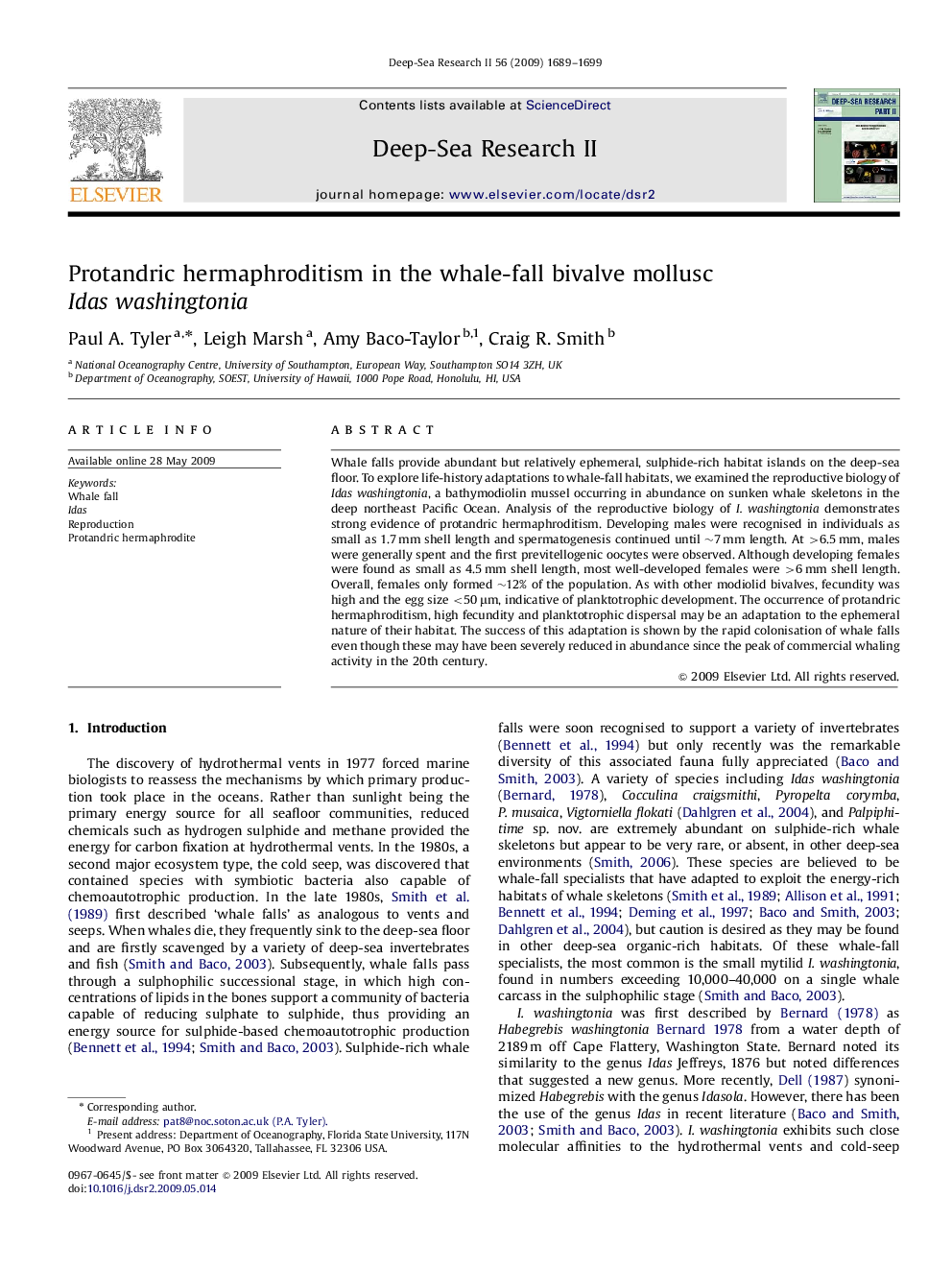| Article ID | Journal | Published Year | Pages | File Type |
|---|---|---|---|---|
| 4537292 | Deep Sea Research Part II: Topical Studies in Oceanography | 2009 | 11 Pages |
Abstract
Whale falls provide abundant but relatively ephemeral, sulphide-rich habitat islands on the deep-sea floor. To explore life-history adaptations to whale-fall habitats, we examined the reproductive biology of Idas washingtonia, a bathymodiolin mussel occurring in abundance on sunken whale skeletons in the deep northeast Pacific Ocean. Analysis of the reproductive biology of I. washingtonia demonstrates strong evidence of protandric hermaphroditism. Developing males were recognised in individuals as small as 1.7 mm shell length and spermatogenesis continued until â¼7 mm length. At >6.5 mm, males were generally spent and the first previtellogenic oocytes were observed. Although developing females were found as small as 4.5 mm shell length, most well-developed females were >6 mm shell length. Overall, females only formed â¼12% of the population. As with other modiolid bivalves, fecundity was high and the egg size <50 μm, indicative of planktotrophic development. The occurrence of protandric hermaphroditism, high fecundity and planktotrophic dispersal may be an adaptation to the ephemeral nature of their habitat. The success of this adaptation is shown by the rapid colonisation of whale falls even though these may have been severely reduced in abundance since the peak of commercial whaling activity in the 20th century.
Keywords
Related Topics
Physical Sciences and Engineering
Earth and Planetary Sciences
Geology
Authors
Paul A. Tyler, Leigh Marsh, Amy Baco-Taylor, Craig R. Smith,
